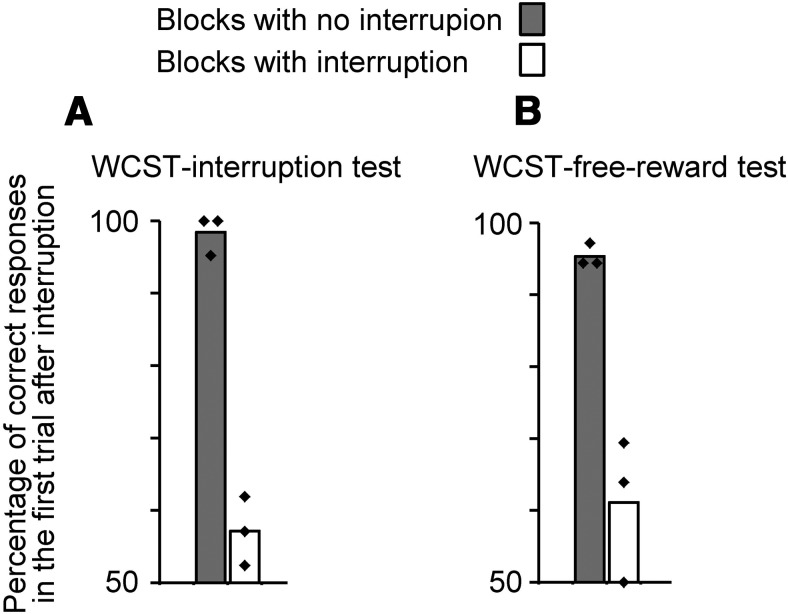Figure 14.
The consequences of interrupting WCST and performance in LH and HH trials. A, Interrupting WCST by a face-detection task. Right-side bar shows percentages of correct responses in the first trial of WCST analog following interruption by two consecutive face-detection trials. Left-side bar indicates percentages of correct responses in the same context, but without interruption. B, Interrupting WCST by a salient event. Right-side bar shows percentages of correct responses in the first trial of WCST analog following interruption by free-reward (two small food pellets). Left-side bar indicates percentages of correct responses in the same context, but without interruption by free-reward. The tilted squares indicate the values of individual monkeys. The free-reward was given in the middle of usual ITI period after the monkeys reached 85% correct performance (shift criterion). The face-detection task was introduced after the monkey reached the shift criterion. The rule did not change and remained the same in the trial that followed the interruptions.

